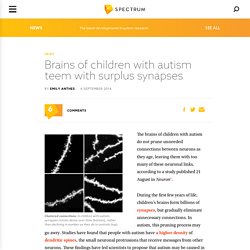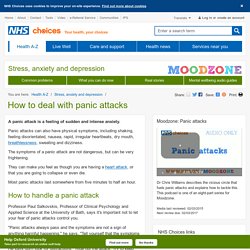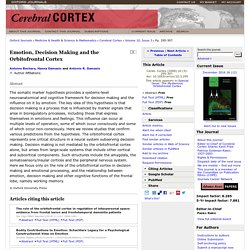

Revues en ligne. SANTE MENTALE EN LIGNE. Human Body. Mental Health - Sante Mentale en ligne.
Mental Health. Site associatif sur l'anorexie mentale et la boulimie. Forum santé mentale. - Association Santé Mentale et Communautés. Troubles psychiques. Rubriques en ligne. Maladies et Troubles Psychiques. Troubles bipolaires, Schizophrénie, Autisme de haut niveau : Fondation Fondamental pour allier toutes les intelligences pour soigner les maladies psychiatriques. Forum d'entraide : la schizophrénie. OCD & Anxiety Disorders: Crash Course Psychology #29. Brains of children with autism teem with surplus synapses. Clustered connections: In children with autism, synapses remain dense over time (bottom), rather than declining in number as they do in controls (top).

The brains of children with autism do not prune unneeded connections between neurons as they age, leaving them with too many of these neuronal links, according to a study published 21 August in Neuron1. During the first few years of life, children’s brains form billions of synapses, but gradually eliminate unnecessary connections. In autism, this pruning process may go awry. Studies have found that people with autism have a higher density of dendritic spines, the small neuronal protrusions that receive messages from other neurons. These findings have led scientists to propose that autism may be caused in part by deficient synaptic pruning. In the new study, the scientists studied brain tissue from people and mice, focusing on a protein called mTOR. Pruning problems: However, larger studies may reveal more variation, notes Cowan.
References: How to deal with panic attacks - Stress, anxiety and depression. A panic attack is a feeling of sudden and intense anxiety.

Panic attacks can also have physical symptoms, including shaking, feeling disorientated, nausea, rapid, irregular heartbeats, dry mouth, breathlessness, sweating and dizziness. The symptoms of a panic attack are not dangerous, but can be very frightening. They can make you feel as though you are having a heart attack, or that you are going to collapse or even die. Most panic attacks last somewhere from five minutes to half an hour. How to handle a panic attack Professor Paul Salkovskis, Professor of Clinical Psychology and Applied Science at the University of Bath, says it's important not to let your fear of panic attacks control you.
"Panic attacks always pass and the symptoms are not a sign of anything harmful happening," he says. He says don't look for distractions. "Confront your fear. As the anxiety begins to pass, start to focus on your surroundings and continue to do what you were doing before. Ways to prevent panic attacks. Symptoms of stress. Emotion, Decision Making and the Orbitofrontal Cortex. The somatic marker hypothesis provides a systems-level neuroanatomical and cognitive framework for decision making and the influence on it by emotion.

The key idea of this hypothesis is that decision making is a process that is influenced by marker signals that arise in bioregulatory processes, including those that express themselves in emotions and feelings. This influence can occur at multiple levels of operation, some of which occur consciously and some of which occur non-consciously. Here we review studies that confirm various predictions from the hypothesis. The orbitofrontal cortex represents one critical structure in a neural system subserving decision making. Decision making is not mediated by the orbitofrontal cortex alone, but arises from large-scale systems that include other cortical and subcortical components. HealthyPlace Mental Health Support, Resources & Information. Exploring social anxiety. Passive aggressive and assertive communication.